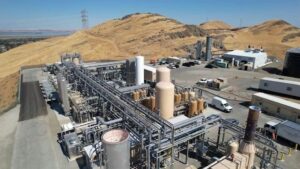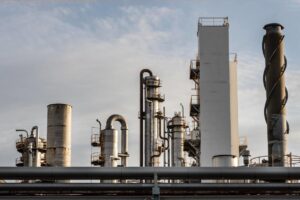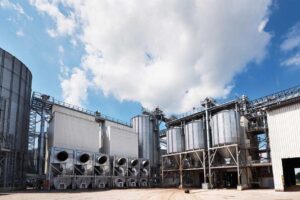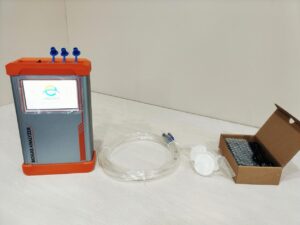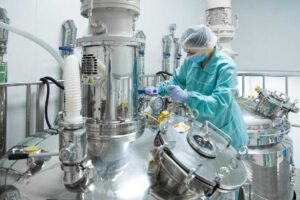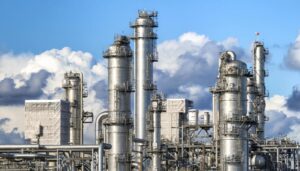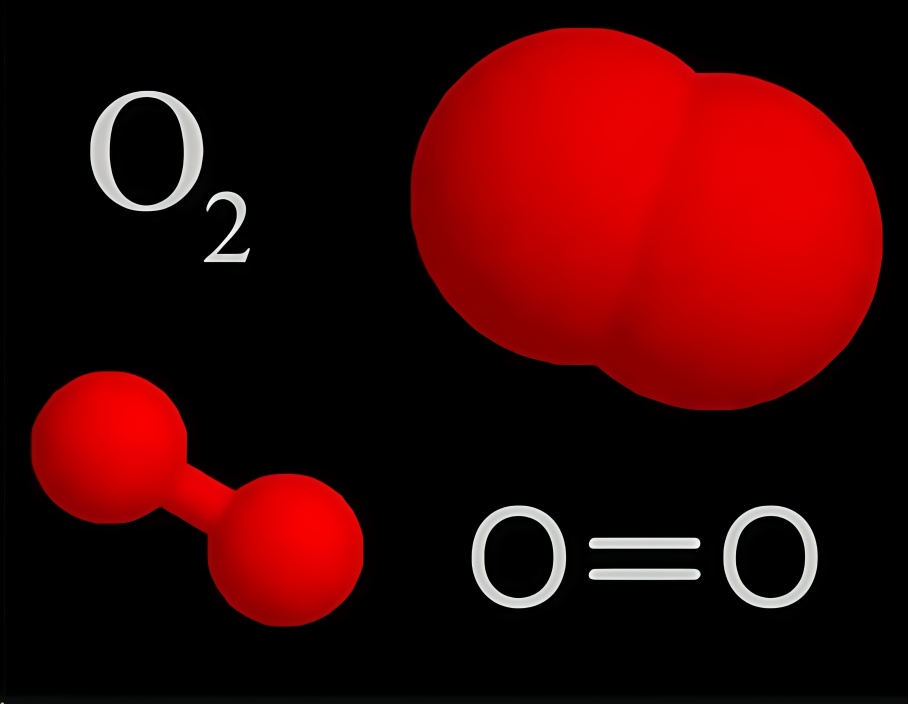
(Oxygen)
In chemical plants, power plants and metalworks, precise oxygen monitoring is a must. Too much oxygen can fuel explosions, while too little can choke combustion and ruin products. A well-placed oxygen analyzer acts as a guardrail. It keeps oxygen in a safe, optimal range for each process. For example, oxygen analyzers ensure safety and product quality in chemical processing and metallurgy, and they fine-tune furnace combustion in power generation. Engineers often list the key benefits of oxygen monitoring as:
- Safety: Prevent dangerous mixes of fuel and oxygen.
- Efficiency: Optimize combustion to save fuel and boost output.
- Quality: Avoid oxidation or spoilage by keeping oxygen at the right level.
- Compliance: Meet environmental and safety regulations.
Together, these factors make an oxygen analyzer indispensable for process control and worker protection.
Yet, there isn’t just one way to measure oxygen. Multiple technologies exist, each with unique strengths and weaknesses. Plant engineers, EHS managers, and operators often ask: Which oxygen analyzer fits my process best? This is where careful selection becomes essential. ESEGAS provides solutions across all major technologies, helping users match measurement science with real-world needs.
What Key Factors Drive Oxygen Analyzer Selection?

Before comparing technologies, it’s important to ask: what exactly do I need from my analyzer? The answer usually depends on four factors:
- Accuracy and reliability – Can the analyzer deliver stable, trustworthy data?
- Response time – Does the process demand instant feedback or slower trend data?
- Lifecycle cost – How do capital cost, spare parts, and maintenance balance over years?
- Environmental fit – Can the sensor survive heat, dust, or corrosive gases?
For example, combustion optimization in a cement kiln demands rugged sensors that endure dust and vibration. But oxygen purity control in a chemical plant requires fast, precise readings. These drivers shape whether a zirconia probe, a paramagnetic cell, or a laser sensor is the right tool.
What Are the Four Core Technologies of an Oxygen Analyzer?
1.Laser (TDL) oxygen analyzers
Laser-based oxygen analyzers use tunable diode lasers (TDL) to shine light through the gas and detect how much oxygen absorbs the beam. This optical method gives extremely fast, precise readings even in harsh or dusty gases. In practice, a TDL analyzer can measure tiny traces of oxygen (ppm level) up to full combustion air, and it responds in seconds. This makes laser units ideal for in-situ measurements of flue gas or inert environments where other sensors fail. Moreover, TDL analyzers need very little recalibration because their optical cells do not drift. The tradeoff is cost. These are the “Ferraris of the oxygen world” – high-performance and super accurate, but with a high price tag. In fact, laser systems often require budgets in the tens of thousands of dollars. In short, companies choose laser/TDL analyzers when ultimate speed and accuracy in tough conditions justify the expense.
2.Zirconia oxygen analyzers
Zirconia oxygen analyzers use a heated ceramic (zirconium oxide) cell that generates a voltage proportional to oxygen concentration. They excel in hot, combustion-related processes. For example, in boilers or furnaces, a zirconia probe can withstand high temperatures and measure 0–100% oxygen accurately. These analyzers are robust and often mounted directly in the stack or process (in-situ), giving very fast response. They can even detect trace O₂ down to parts-per-million levels. However, because the sensor must be hot (~650 °C), frequent on/off cycling can shorten its life, and it cannot handle reducing gases (like CO or unburned hydrocarbons) without error. Also, zirconia units cost more than simple electrochemical sensors but less than paramagnetic or laser systems. In industrial use, zirconia analyzers are a common choice for direct combustion control, offering a good balance of range, robustness, and mid-range cost.
3.Paramagnetic oxygen analyzer
Paramagnetic oxygen analyzers exploit oxygen’s attraction to magnetic fields. A classic design suspends a small “dumbbell” in a magnetic field; when O₂ is present, it rotates the dumbbell, which is optically measured. The result is very fast response and high precision for concentrations from about 1% up to 100% O₂. These analyzers use no consumable parts (no electrolytes or fans), so sensor life is long under normal conditions. They perform best in clean, dry gas streams. A key limitation is their sensitivity: dust, vibration or water vapor can disturb the measurement. Paramagnetic units are not suited for ultra-low (ppm) oxygen; if trace measurement is needed, another technology is required. They also tend to be relatively expensive. In fact, paramagnetic systems cost more than zirconia or electrochemical analyzers. Nevertheless, they remain a solid choice where rugged accuracy is needed and the gas is relatively clean, such as in laboratory gas mixing or combustion control in controlled environments.
4.Electrochemical oxygen analyzer
Electrochemical oxygen analyzers (often called galvanic or fuel-cell sensors) are the simplest devices. They work like a battery: oxygen reacts at electrodes and generates a current proportional to concentration. Because of their simplicity, they have a very low upfront cost. In fact, electrochemical analyzers and zirconia units are generally the cheapest options. This makes them appealing for projects on a tight budget or for portable and safety monitors. The downside is that the electrochemical sensors wear out. They must be replaced every few months (or more often) and recalibrated frequently. They also perform best at ambient conditions and modest oxygen levels (commonly up to ~25% O₂). In harsh industrial flue gases they tend to fail quickly. In practice, engineers use electrochemical analyzers for simple tasks: checking ambient O₂ in inert gas tanks, basic safety monitoring (e.g. confined space), or applications where low cost and simplicity outweigh the need for ultra-high reliability.
How Do Different Oxygen Analyzer Types Compare for Industrial Applications?
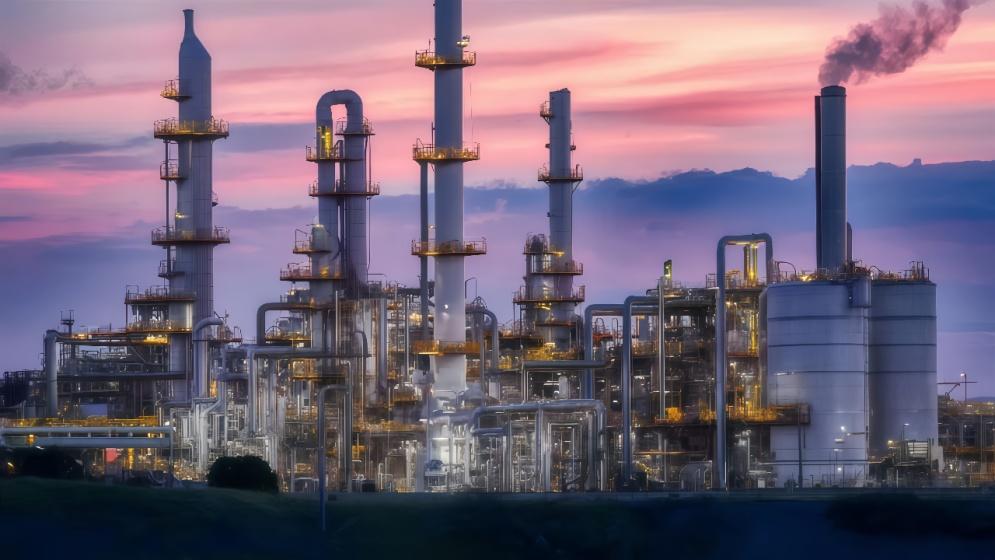
Choosing the right analyzer means balancing range, speed, durability, and budget. The table below summarizes key features of Laser (TDL), Zirconia, Paramagnetic, and Electrochemical oxygen analyzers:
| Technology | Measurement Range | Response | Approx. Cost (USD) |
| Electrochemical | ppm to ~25% O₂ | Moderate | Lowest (~$1k–2k) |
| Zirconia (High-temp) | ppm to 100% O₂ | Fast | Mid-range (~$3k–7k) |
| Paramagnetic | ~1% to 100% O₂ | Fast | High (~$5k–10k+) |
| Laser (TDL) | ppm to 100% O₂ | Very fast | Highest (~$10k+) |
Each technology has its sweet spot. For instance, if cost is the biggest concern, electrochemical or zirconia units are more budget-friendly. If accuracy and speed in dirty or high-pressure gas streams are needed, laser analyzers excel. Zirconia units shine in hot combustion environments, while paramagnetic sensors deliver reliable percent-level accuracy in well-conditioned streams. Engineers must also consider maintenance: laser systems have low upkeep, whereas electrochemical sensors need regular swaps.
Conclusion
Choosing an oxygen analyzer is not about picking the “best” technology overall. It is about matching the physics of the sensor to the conditions of your plant.
- For hot flue gases, zirconia remains unbeatable.
- For portable monitoring, electrochemical is practical.
- For stable process control, paramagnetic delivers accuracy.
- For fast, high-end applications, laser analyzers lead the way.
The real test is whether the analyzer helps you meet safety, efficiency, and compliance goals without excessive maintenance. ESEGAS offers more than instruments—it offers partnership, experience, and solutions that adapt to your specific needs.
So, when you ask, Which oxygen analyzer is right for my plant?—the answer lies not only in the datasheet, but in understanding your process reality.
If you want to get a tailored oxygen analyzer, contact with us please!
FAQs on Oxygen Analyzers
Q1: What is the difference between Laser, Zirconia, Electrochemical, and Paramagnetic oxygen analyzers?
Laser (TDLAS) analyzers offer ultra-fast, drift-free measurements. Zirconia analyzers are rugged for hot combustion gases. Electrochemical sensors are cost-effective but need frequent replacement. Paramagnetic analyzers deliver accurate percent-level readings in clean gases.
Q2: Which type of oxygen analyzer is best for power plants, chemical processing, or metallurgy applications?
Power plants often prefer Zirconia or Laser analyzers for combustion control. Chemical processing uses Paramagnetic and Laser for precision. Metallurgy plants rely on Zirconia for furnace monitoring.
Q3: How accurate are Laser oxygen analyzers compared to Zirconia or Paramagnetic analyzers?
Laser oxygen analyzers provide the highest accuracy and fastest response, even in harsh flue gases. Paramagnetic analyzers are precise for percent O₂. Zirconia analyzers are reliable but less suited for ultra-low concentrations.
Q4: Why are Electrochemical oxygen analyzers the most affordable option, and what are their limitations?
Electrochemical analyzers are inexpensive because of their simple design. However, sensors degrade quickly, need frequent calibration, and are not ideal for high-temperature or corrosive gases.
Q5: What is the typical price range of Zirconia, Paramagnetic, and Laser oxygen analyzers?
Electrochemical analyzers cost around $1,000–$2,000. Zirconia analyzers are mid-range at $3,000–$7,000. Paramagnetic and Laser analyzers are premium, typically $5,000–$10,000+ depending on configuration.
Q6: How often do Electrochemical oxygen analyzer sensors need replacement?
Most electrochemical oxygen sensors last only a few months to a year. Replacement frequency depends on gas composition, operating conditions, and usage intensity.
Q7: Can Zirconia oxygen analyzers measure trace oxygen levels in flue gas?
Yes. Zirconia analyzers can detect oxygen down to ppm levels, making them effective for combustion control and emissions monitoring in power and metallurgy plants.
Q8: Are Paramagnetic oxygen analyzers suitable for low-concentration (ppm-level) oxygen measurement?
No. Paramagnetic analyzers are best for 1% to 100% oxygen ranges. They are not ideal for trace-level (ppm) detection, where Laser or Zirconia performs better.
Q9: How do I choose the right oxygen analyzer technology for my process conditions and budget?
Start with your process environment, gas composition, and accuracy needs. Match technology to application: Electrochemical for budget tasks, Zirconia for combustion, Paramagnetic for clean streams, and Laser for precision in harsh gases.











